Is this the simplest iteration of a Wildflower Seed Library?
Here's what I feel is a native plant seed distribution operation in its most basic form. In many cases, simpler is better; let's not reinvent the wheel.
The advantages are many when comes the time to encourage native plants in our managed landscapes. But getting the seeds of hundreds of species easily can be a problem. That’s where Wildflower Seed Libraries can come in!
Last November, I took the train to Ottawa, starting from my Eastern hometown of Moncton, for a very particular reason : I think native plant seed libraries can truly take off in this day and age.
Funding from Nature Canada paid for this trip, so I could elaborate a guide on how to participate, manage or start a Wildflower Seed Library like in Ottawa, where a strong and well-oiled initiative makes waves.
As soon as I arrived, I was welcomed with open arms. The founder of the Ottawa Wildflower Seed Library, Melanie Ouellette, moved from my neck of the woods (New Brunswick) to the capital of Canada and created something quite remarkable there.
From her own house, she commands a whole operation of native plant seed distribution, in the form of cute little envelopes made by volunteers from recycled paper.
What you might see from the outside is just the tip of the iceberg; I got to live the busy season of the seed library from the inside.
Thanks to regular meetings that week, I was able to see how a seed library truly operates. Maybe then, we can spread that model throughout the world to restore our managed landscapes into healthy ecosystems.
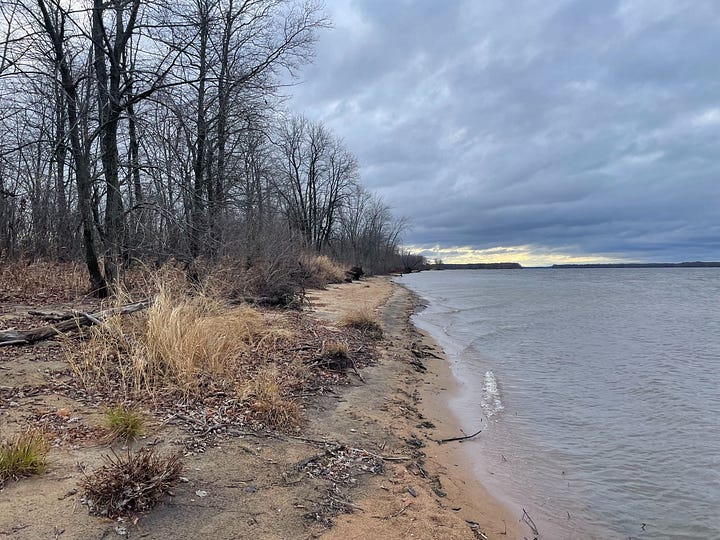
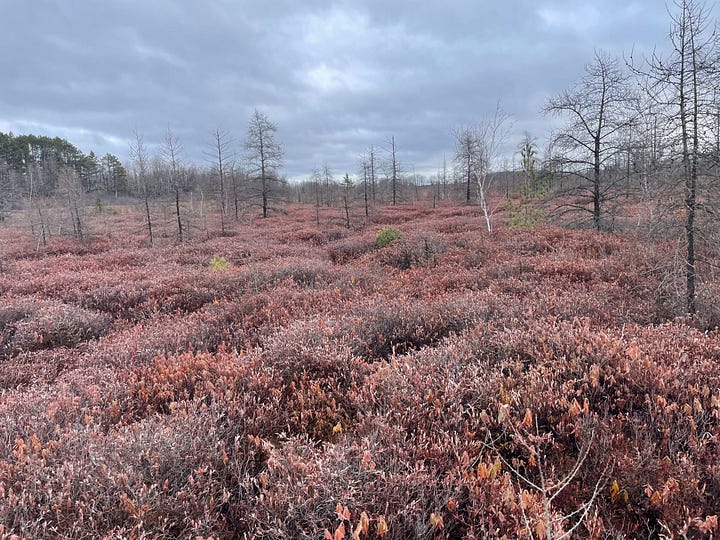
Let’s start with the principles of Ottawa Wildflower Seed Library.
Provide free access to native plant seeds
Teach people about gardening responsibly
Ask seed recipients to reciprocate the gift of nature
Since 2020, over 8,000 community projects, schools and individuals received free native seeds in Ottawa, the Ottawa valley and in five other provinces. Of these recipients were at least a dozen city schools where students were able to participate in hands-on gardening with native plants. In addition to seeds, more than 1,700 community projects, schools and individuals have received free native plants in the last two years. The Seed Library disseminates accessible scientific information related to good ecological practices and tools on harvesting native seeds, through an impressive social media presence and through presentations throughout our city. Since 2023, 10,600 individuals have received information on the importance of native plants in ecosystems.
The question I ask myself is: how can we make this all happen in the simplest way possible?
Act zero : The online presence
This seems like a step that might or might not permeate every other that’s about to come. Nowadays, you kind of need an online presence in many communities, but who am I to say? Maybe your community is so tightly-knit that you don’t need to be on Facebook? Although I doubt it, it might be possible.
In Ottawa, there is a super-active Facebook group of more than 8,000 people (as of January 2025) that you can join, no matter where you come from. All kinds of informations are shared. It allows people to connect, and the posts serve as reminders of what there is to be done.
If you’d rather work by email, that is up to you. But I can’t guarantee it will work as well, since as of early 2025, Meta is still where people are at in terms of building a community around those subjects. That could change in the near future.
Act one : Accept donations of seeds
Contrary to popular belief, one need not hundreds of donations to begin. One donation of a single or a few species is enough, and can feed many envelopes for a first season.
In theory, you could have a seed library of only Boneset, or solely Blue Flag Iris, and it would still make a positive impact.
In practice, the Ottawa Wildflower Seed Library goes above and beyond that. They might have two hundred species, but no more than fifty-ish donors.
These donors, when one wants to be a purist and start from the wild, should harvest on their land or have permission from the owner; we don’t want to break any laws here. They should also research and know the target species very well. Misidentification can lower credibility.
After we know the location, we might flag it in some way, and when the time is ripe we need the seeds to be ready.
The seeds must follow the Honourable Harvest. No taking the first nor the last you come across, and many recommend that no more than 10 % of what’s there should be taken. A recommended read is The Serviceberry by Robin Wall Kimmerer (2024).
The seeds must be straight species. Distributing cultivars goes against the principles of the Wildflower Seed Library.
The seeds must be harvested at the right time. Any other time means the seeds might not germinate correctly.
Once we have our bag of seed-heads or seeds, we must label them correctly, with the date, exact species and location. Then they’re ready to be donated.
In the Ottawa context, donations are accepted not only at the door of the building operating as the library (In this case, Melanie’s house) but also at the same time as distribution events. These wondrous, multipurpose, ultra-efficient meetings are held all around the community. But for ourselves, we can’t hold those yet, as we don’t have packed seeds to give out.
Act two : Pack them in some way
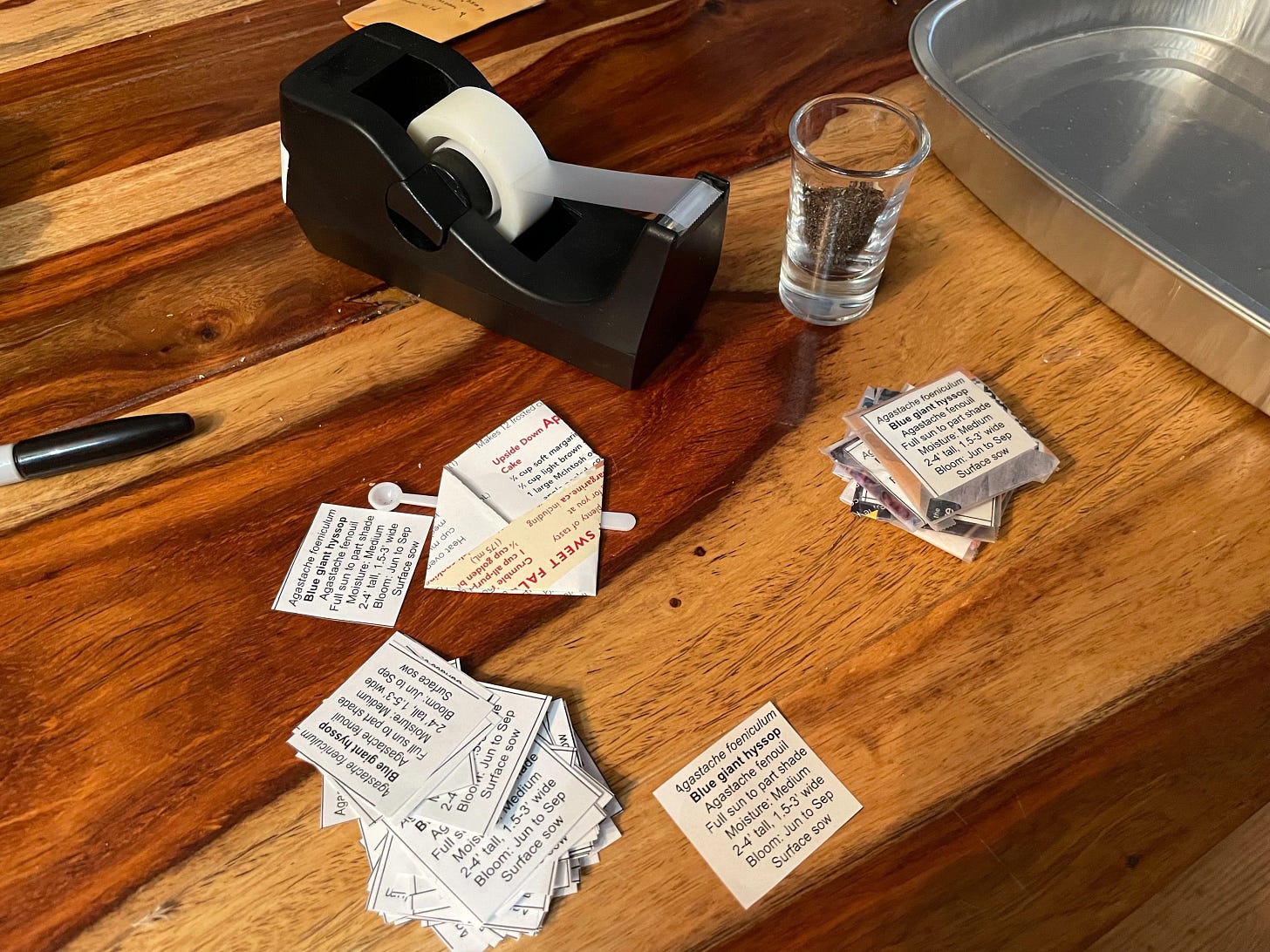
The second step seems quite simple. We pack our donations and label them.
But making seed envelopes takes time. Packing and labeling them also does. When we want to do this without spending our whole life on distributing free stuff, that’s where volunteers come in.
Now you’d be tempted to scream “free labor!!”, but you’d be surprised at how many people want to do meaningful work.
This meaningful work, however menial, can be done in front of the TV or while listening to an audiobook, yet is instrumental in making sure a seed library operates.
It includes :
Cutting squares of recycled paper and folding small seed envelopes. This can be done easily by literally anyone, yet the product can be stored quite easily.
Packing cleaned donations directly from large amounts of uncleaned seed. We need to clean (thresh) the seed from the chaff (non-seed material) and transfer the cleaned seed to medium-sized envelopes. This should be done by the person who has access to where the donated seeds are stored at first.
This one has no video, but it involves cleaning the seedheads and packing a few hours’ worth of seed-packing material into large envelopes.
This is to ensure the person packing the seeds at the other end doesn’t get too much work assigned to them. A too large amount of seeds could easily represent too many hours’ work.
Packing small amounts of seeds from medium envelopes into small seed envelopes, and labeling them. This is the most time-consuming and timely step, as it has to be done for a lot of cumulative time to get a sizeable amount of envelopes.
For this one, we need printed directions to grow each plant printed on a standard sheet of paper, which will be taped to shut the envelope.
The quantities of seed are generally 40-50 per envelope. This is determined by a set of spoons, which are used in Ottawa to account for different seed sizes in a uniform way.
Now we have our seeds, we just need containers for envelopes. Ottawa uses plastic trays from ULINE.
Act three : Do events
Distribution events, at their simplest, can be really efficient.
They serve as :
A place for people to get seed envelopes
A place for people to get seeds to pack
A place for people to give the envelopes they packed
A place for people to meet and talk about native plant gardening and planting
A place to accept donations and sell merchandise.
A way to recruit and keep volunteers
In Ottawa, it takes the form of a room, rented for the afternoon, where tables are garnished with containers full of seed envelopes. There is a table for each of these purposes:
Distribution event tables
Welcome table
Donations and merch (cashbox) table
Seed trade table
Shade plants
Wet Part-shade plants
Dry Part-shade plants
Sun plants
Trees and shrubs
Winter sowing teaching table
Ask-Me-Anything table
You however don’t need events with ten tables to get started. The founder Melanie started doing this parks and people’s driveways by herself.
My own adventures in starting a seed library
I have already dipped my toe and started a Facebook group, and received seeds from Ottawa this year. I thank them for that, but just the distribution is already something big for one person. I’ve got donations, but did not have the time to pack them into those singular recycled envelopes.
To distribute what Ottawa sent me, I used already-existing events and opportunities: seed swaps, farmers markets, but also created my own event called “New Year, New Roots”.
All that to say, finding committed volunteers is not easy. I wholeheartedly commend Melanie for the work she has done in finding a core group of dedicated people running a system like that so smoothly. She even set up mailing and posts across Canada after opening an online shop for two weeks.
After coming back from my trip there, I have to say I was a bit overwhelmed, but encouraged in how simple and necessary this whole process is.
Next steps
We just talked about a basic model for a seed library, but there can be more to it.
Armed with this information, one may now find people who want to create new processes, to go on top of the basic seed library we talked about in this article.
Going with everyone’s strengths is an essential step, as we should take on what we’re best at in this kind of endeavour. For example, I love communications, so here I am communicating about it. Just don’t do everything all at once. Find allies. Talk to them about their passion and incorporate it into your library!
Here are some ideas to pitch to new volunteers:
A mailing system?
A database of all the plants?
A blog, podcast or newsletter?
A program to teach children native plants at school?
A heatmap of all the places the seeds went to?
An ecoregional description of the ecological area(s) covered by the seed library?
Etc.
You get the picture.
Now as you’ve probably noticed, this can be a real rabbit-hole and can take a whole life to make come to fruition. But if you have the time, the bandwidth and the motivation, go and try things!
If you’re yet unsure about how or why to do all this, be on the lookout for Sharing our Nature, a guide on Wildflower Seed Libraries, by subscribing below.



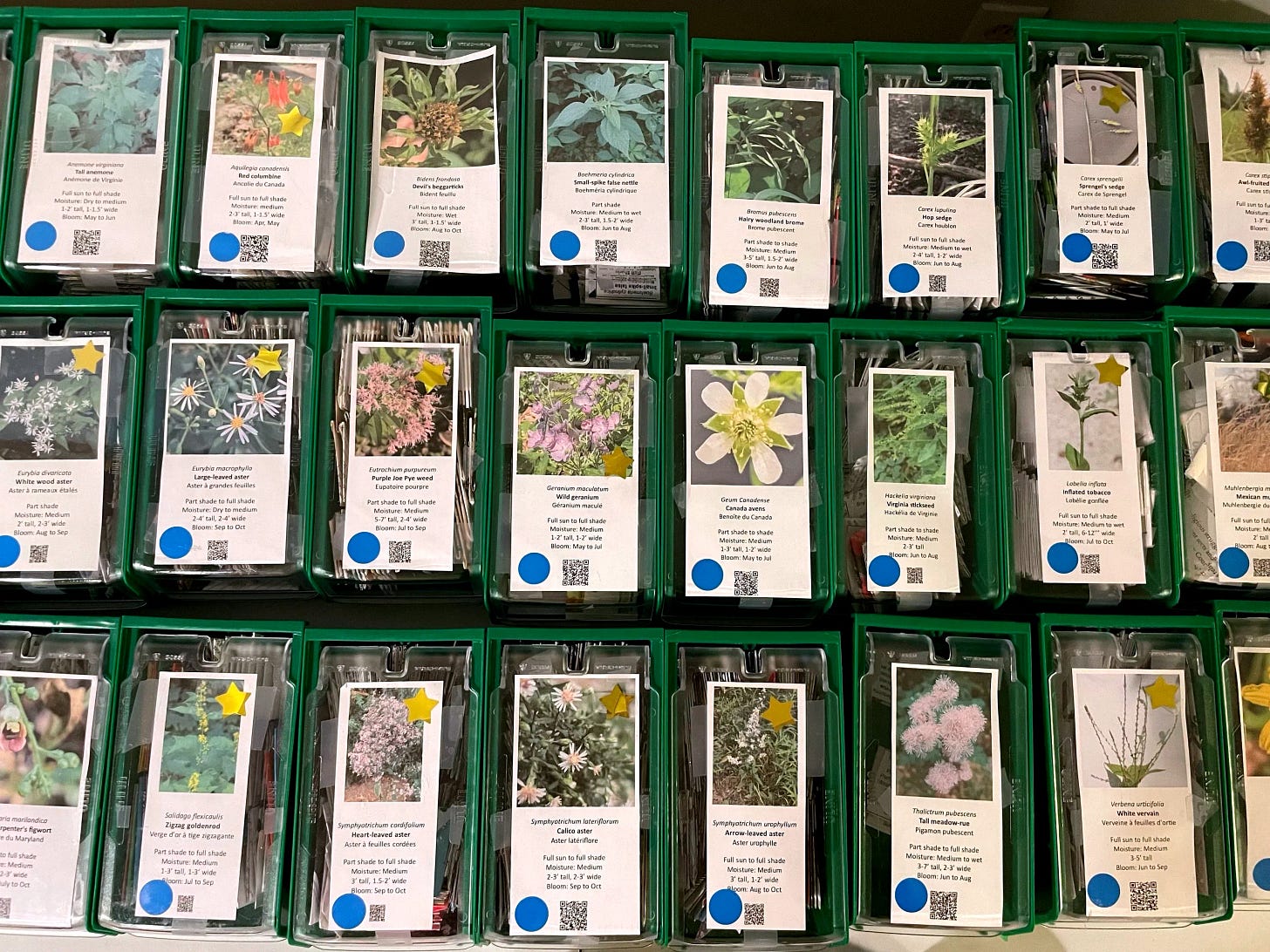

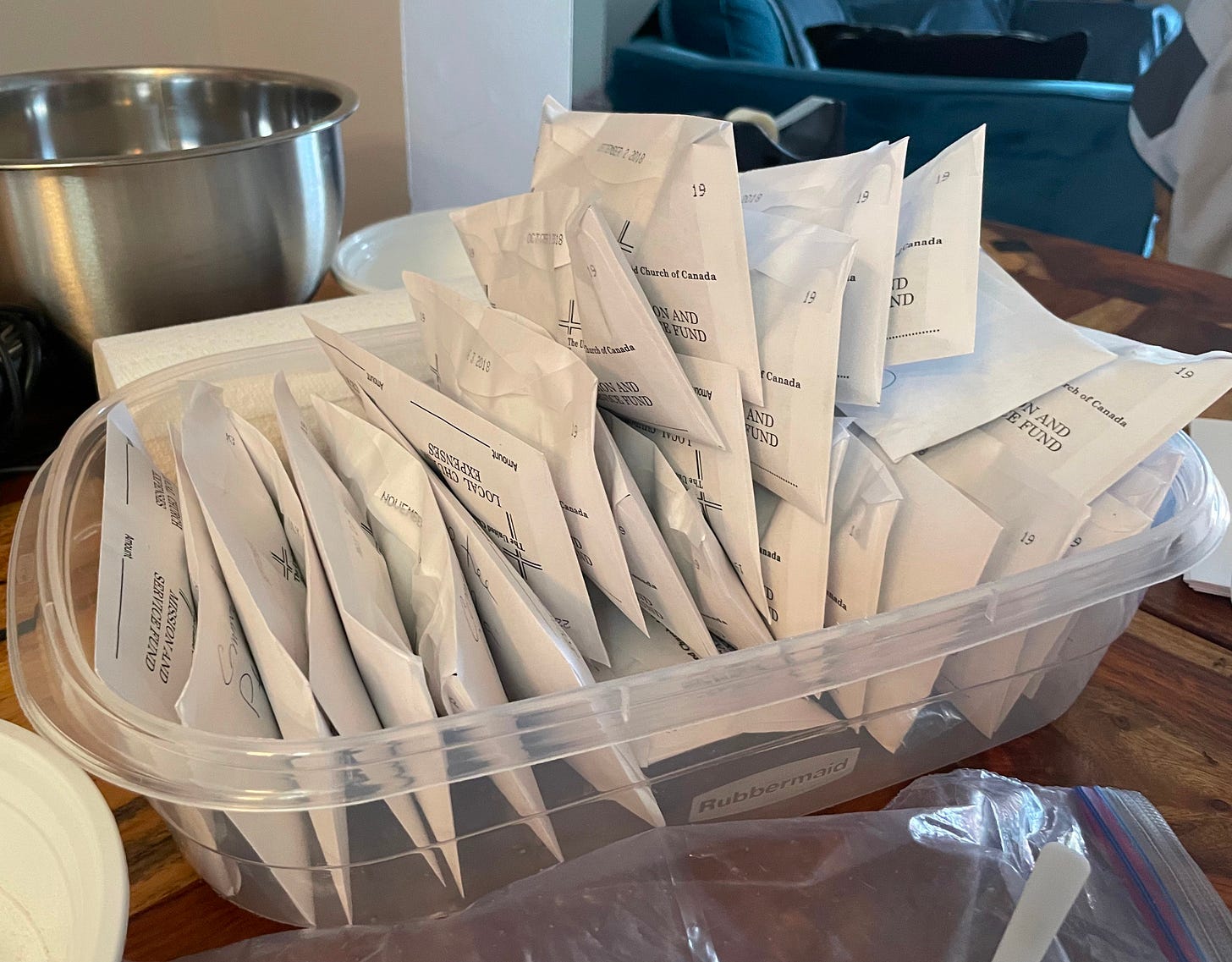


Well said Sam. Best of luck.